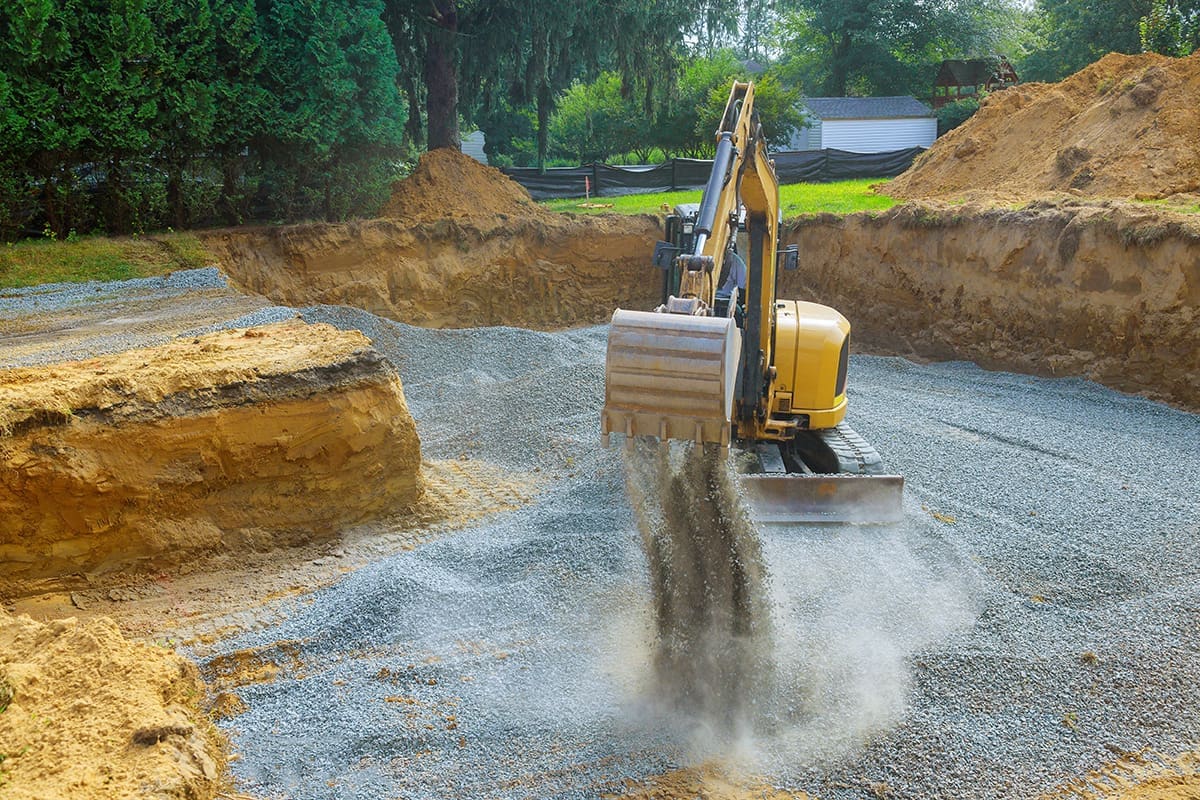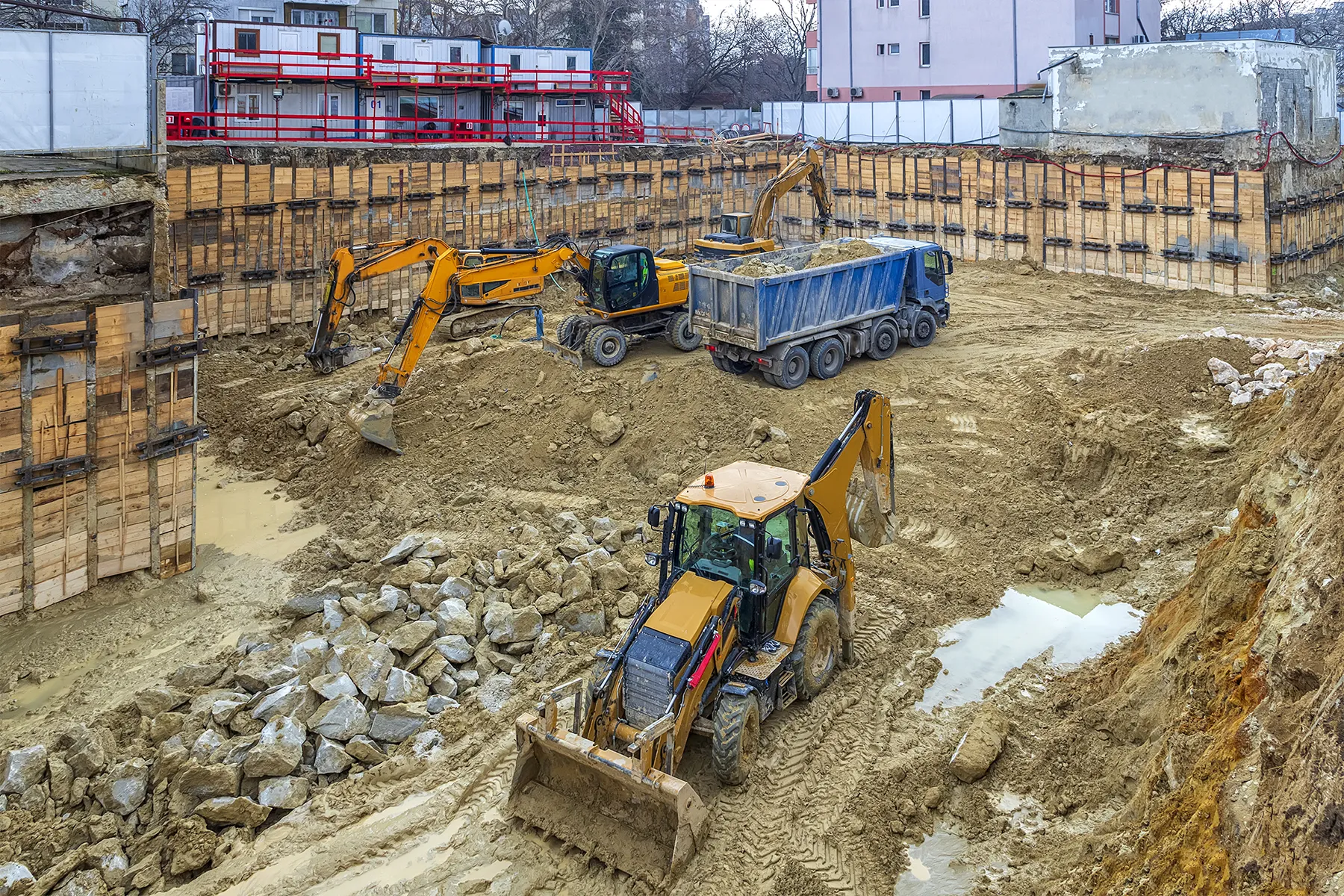
Dynamic Compaction 101: The Ultimate Guide for Beginners
Introduction
Picture yourself on a construction site in sunny Southern California. You’re staring at a vast expanse of land that will soon support significant structures. But first, the ground beneath must be solid and stable. This is where Dynamic Compaction (DC) comes in.
Dynamic Compaction is a ground improvement technique that transforms loose, uncontrolled soils into material capable of providing a strong foundation. Whether you’re building warehouses on the West Coast or industrial complexes elsewhere, understanding DC is crucial for successful projects. This guide explores the fundamentals of DC, from its principles to applications, and why it’s a game-changer in ground improvement.
What is Dynamic Compaction?
Dynamic Compaction, often referred to as DC, is a powerful ground improvement method used to increase soil density. It involves dropping heavy weights from a considerable height to compact the underlying in situ soil. This process creates a shock wave that rearranges soil particles, reducing voids and increasing density.
Definition and Principles:
DC leverages the energy from heavy impacts to densify soil. By dropping weights ranging from 10 to 25 tons from heights of up to 100 feet, the ground receives significant force, driving soil particles closer together. This technique is especially effective for loose, granular soils but can be adapted for various soil types.
Historical Development:
The technique dates back to the mid-20th century and has evolved significantly. Initially used for military airstrips, DC’s effectiveness soon led to its adoption in civil engineering projects worldwide. Today, it stands as a reliable method for ground improvement, favored for its cost-efficiency and versatility.
Why Choose DC Over Other Methods?
DC offers several advantages over traditional ground improvement methods. It is cost-effective, schedule-friendly, and can be applied to large areas efficiently. Moreover, its ability to significantly increase soil bearing capacity makes it a preferred choice for many projects.
Notable Projects:
Consider a recent project in Southern California where DC was used to prepare the ground for a new commercial complex. The site initially had loose, sandy soil, posing a challenge for construction. By employing DC, the soil was densified effectively, ensuring a stable foundation for the buildings. This project demonstrated the power of DC and its suitability for urban development projects.
How Does Dynamic Compaction Work?
DC operates on a simple yet powerful principle: using kinetic energy to densify soil. But how exactly does this process unfold on a typical construction site? Let’s break it down step-by-step.
Equipment Used:
Picture a colossal crane towering over a site, with massive steel weights poised to drop. These weights, often resembling giant hammers, range between 10 to 25 tons. The height from which they’re dropped can be as high as 100 feet, ensuring enough energy to penetrate and compact the soil effectively.
Steps Involved:
- Site Preparation: Clear the area of debris and ensure a level surface.
- Weight Dropping: Weights are hoisted by cranes and released to free fall, striking the ground with tremendous force. Each drop creates a shock wave, compacting the soil below. This action is repeated in a grid pattern to ensure uniform compaction across the entire site.
Real-World Example:
From my projects, I recall a significant development near the coastline in Los Angeles, where we had to stabilize sandy soil for a new commercial hub. The initial test drops sent clouds of dust into the air, a sight both awe-inspiring and indicative of the power at play. The compaction was so effective that the ground, once loose and unstable, became firm enough to support heavy construction equipment in a matter of days.
What Types of Soils Are Best Suited for DC?
DC is particularly effective for loose, granular soils such as sands and gravels. However, it can be adapted for a variety of soil types, including silty and clayey soils, with adjustments in the weight and drop height to achieve optimal results.
Real-Life Example:
One of the most striking applications of DC I’ve encountered was during a large-scale project in the Long Beach area. The site, initially plagued by loose fill material, was transformed using DC, enabling the construction of a robust marine terminal. This project showcased the efficacy of DC and its versatility in different soil conditions and project types.
Benefits and Applications of Dynamic Compaction
DC offers numerous benefits that make it a preferred method for ground improvement across various industries. Let’s delve into why this technique is so valued and explore its diverse applications through real-world examples.
Key Benefits:
- Cost-Effectiveness: Compared to other ground improvement methods, DC often requires less time and fewer resources, leading to significant savings.
- Increased Soil Bearing Capacity: By densifying the soil, DC enhances its ability to support heavy loads, which is crucial for constructing stable foundations.
- Efficiency: Its versatility allows it to be applied to large areas efficiently, making it ideal for expansive projects.
Real-World Example:
From my professional experience, I recall a large-scale project in Southern California where DC was chosen over traditional soil stabilization techniques. The project involved constructing a new high-rise building on a site with loose sandy soil. By employing DC, we significantly increased the soil’s bearing capacity, ensuring a stable foundation for the skyscraper. The cost savings and efficiency gains were substantial, contributing to the project’s overall success.
Applications in Various Industries:
- Construction: DC is valuable for preparing sites for commercial and industrial buildings.
- Road Building: Ensures the ground beneath highways and roads is stable, preventing future settlement issues.
- Land Reclamation: Used to improve the stability of reclaimed land, making it suitable for development, especially in coastal areas.
Real-World Example:
A notable example is the San Diego waterfront, where DC was used to stabilize the reclaimed land for a new waterfront park and commercial area. This project enhanced the land’s stability and showcased the versatility of DC in different applications.
Case Studies Demonstrating Cost Savings and Improved Project Timelines:
One of the most striking examples is a recent project at the San Diego International Airport. The site required rapid ground improvement to meet tight construction deadlines. By using DC, the project team quickly densified the soil, reducing the construction timeline by several months and saving millions of dollars in project costs. This case study highlights the efficiency and economic benefits of DC, reinforcing its value in modern construction.
Considerations and Limitations
While DC is a highly effective ground improvement method, it’s important to understand its considerations and limitations to ensure its appropriate application.
Site Suitability:
DC is most effective on granular soils such as sands and gravels. For cohesive soils like clays, the process can be less effective and might require adjustments. Factors like soil type, water table levels, and the presence of underground utilities must be evaluated before choosing DC.
Real-World Example:
During a project in San Diego, we encountered a site with high groundwater levels. We had to adjust the drop heights and modify the compaction grid to achieve the desired soil density without causing excessive vibrations.
Environmental Impact:
DC generates significant noise and vibrations, which can be disruptive in urban areas or near sensitive structures. It’s essential to conduct thorough environmental assessments and implement measures to mitigate these impacts.
Real-World Example:
For a coastal project near residential areas, we scheduled compaction activities during the day and used sound barriers to minimize noise pollution. These measures helped us complete the project without disturbing the local community.
Limitations:
DC is not suitable for all soil types and project conditions. It is less effective on highly plastic clays and organic soils. Additionally, the vibrations can potentially damage nearby structures or underground utilities. This requires careful planning and sometimes the combination of DC with other ground improvement techniques.
Real-World Example:
In one project in Southern California, we combined DC with vibro-compaction to stabilize a site with mixed soil types, ensuring a uniform and stable foundation for the construction.
What Environmental Considerations Must Be Taken into Account?
When planning a DC project, it’s crucial to assess the potential environmental impact, including noise, dust, and vibrations. Measures to mitigate these impacts can include dust control strategies, vibration monitoring, and timing restrictions to reduce noise during sensitive hours.
Examples Where DC Was Not the Ideal Solution:
A project in a densely populated area of San Francisco highlighted the limitations of DC. The site had highly plastic clays and was surrounded by old buildings. The potential for damage due to vibrations was too high, so we opted for deep soil mixing instead. This alternative provided the necessary soil stabilization without the risk of structural damage.
Future Trends in Dynamic Compaction
DC is not just a current solution; it is evolving with technological advancements and research that promise to enhance its efficiency and applicability. Let’s explore the future trends in DC and how they might shape the industry.
Technological Advancements:
The future of DC is bright, with innovations aimed at improving precision and reducing environmental impact. For example, automated systems are being developed to control the drop height and weight placement with greater accuracy, ensuring consistent results and minimizing human error.
Real-World Example:
During a project in a tech hub near Silicon Valley, we experimented with advanced monitoring systems that provided real-time data on soil compaction. This technology allowed us to adjust the process dynamically, achieving optimal soil density more efficiently than traditional methods.
Research and Development:
Ongoing research is focused on enhancing the applicability of DC in a wider range of soil types and environmental conditions. Studies are exploring the use of different weight shapes and materials to optimize energy transfer and soil compaction.
Real-World Example:
I recall collaborating with a university research team in San Diego, where we tested innovative weight designs that improved the compaction process in silty soils. The preliminary results were promising, indicating potential for broader applications in challenging soil conditions.
How Might New Technologies Impact the Efficiency of DC?
The integration of new technologies, such as drones for site surveying and AI for process optimization, is likely to make DC more efficient and adaptable. These advancements could reduce the time and cost of ground improvement projects significantly.
Innovations in Recent Projects:
A notable example of innovation in DC is a large infrastructure project in Los Angeles. The project used drones to map the site and AI algorithms to optimize the drop grid pattern. This approach not only improved the efficiency of the compaction process but also reduced the environmental footprint by minimizing unnecessary weight drops.
Conclusion
Dynamic Compaction (DC) is a powerful and versatile ground improvement technique with a wide range of applications. It provides a cost-effective, efficient solution for densifying soil, making it suitable for various construction projects. Understanding the fundamentals of DC, from its principles to its benefits and limitations, is crucial for making informed decisions in your projects.
By harnessing the energy of heavy impacts, DC transforms loose soils into stable foundations, enabling the construction of robust structures. However, it is essential to consider site-specific conditions and potential environmental impacts to ensure successful application.
As we look to the future, technological advancements and ongoing research promise to enhance the efficiency and applicability of DC, making it an even more valuable tool in the field of ground improvement.
For more information or to discuss how Dynamic Compaction can benefit your project, contact us today. We are here to provide expert guidance and support for all your ground improvement needs.











